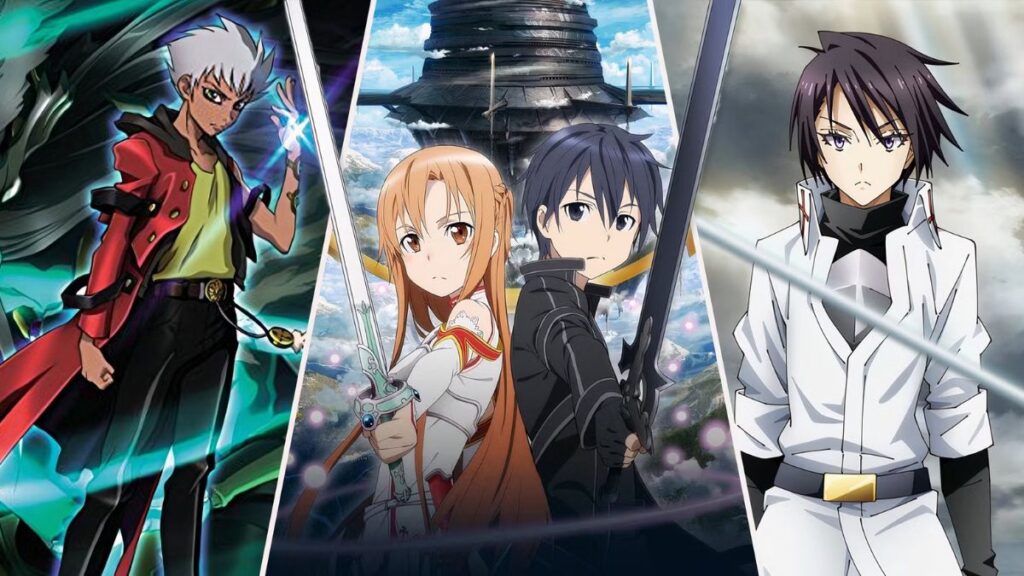In a landscape brimming with kaleidoscopic visuals and narrative daring, narrowing down to 4 anime that truly transcend the screen is no small feat. Yet, every so often, a quartet of series emerges—each distinct in tone, art style and ambition—demanding attention not merely for their spectacle but for their soul. This deep dive explores four landmark anime that together showcase the art form’s past, present and future: a historical epic, a genre-bending masterpiece, a contemporary breakout, and an underappreciated gem.
1. Attack on Titan: The Last Stand of Humanity
Why it matters. When Hajime Isayama’s 4 anime juggernaut arrived in 2013, viewers expected the usual dystopian fare: colossal threats, ragtag fighters, desperate stakes. What they got instead was a seismic reevaluation of trust, ideology and the cost of freedom. By its final season, Attack on Titan wasn’t just about walls and titans—it was a philosophical crucible probing collective guilt, cycles of violence and the blurred boundaries between hero and monster.
Style and structure. MAPPA’s animation in the final arc elevated the battle scenes to near-operatic heights. The fluidity of characters’ Omni-Directional Mobility Gear—aerial flips and lunging blades tearing through skin—became iconic. Yet it’s the muted, twilight palette of Marley’s battlefields, the surreal slow-mo of Eren’s metamorphosis, and the frantic twinning of orchestral strings with pounding percussion that turned action into an emotional symphony.
Narrative alchemy. What makes this particular entry in our 4 anime list unforgettable is its relentless deconstruction of protagonist Eren Yeager. The boy who screamed “I’ll kill them all!” in season one emerges by season four as a tragic avenger, a persecuted martyr, an architect of apocalypse. No single character remains static; betrayal and loyalty ricochet through shifting alliances, culminating in a finale that dared to ask: Is salvation possible when both sides claim victimhood?
Cultural aftershock. From cosplay circles to academic journals, Attack on Titan launched debates on colonialism, genocide and nationalism. Its global fandom—once united in titanophobia—fractured into camps analyzing the morality of violence, the nature of freedom, and the weight of inherited sins. In 2025, its final episodes still spark postmortems that rival the Great War’s redrawing of Europe.
2. Flip Flappers: Bending Reality, Blurring Lines
Why it matters. Among the 4 anime shaping modern boundaries, Flip Flappers stands out as an odyssey of color and consciousness. It’s a coming-of-age story wrapped in a kaleidoscope, where two girls—Cocona and Papika—leap into surreal dimensions to collect “fragments” that embody human emotions. On paper: cute magical-girl tropes. In reality: a kaleidoscopic plunge into memory, identity and the search for self.
Visual bravado. Studio 3Hz cast aside cel-shading monotony. Instead, they unleashed hand-painted vistas that spill beyond borders. One episode shifts from neon beaches to ink-blot labyrinths; another layers fractals that dissolve into watercolors. It’s a deliberate assault on perception—mirroring the protagonists’ inner turbulence. Every scene feels handcrafted, like a graphic novel come to life.
Emotional scaffolding. At its heart, this entry in our 4 anime selection is a reckoning with trauma and the yearning for connection. Cocona’s stoic reserve masks a fractured family; Papika’s boundless enthusiasm conceals survival mechanisms. Their partnership—equal parts friendship, sisterhood and spiritual fusion—unravels as layers peel back, revealing how memory can both liberate and imprison.
Impact and legacy. Though Flip Flappers premiered in 2016, its ripples are only growing. Young creators cite its fearless use of abstraction as proof that mainstream anime can embrace the avant-garde. Comic-cons now host panel discussions on its symbolism, from alchemical transformation to the Jungian shadow. By wedging itself into the 4 anime conversation, it reminds us that animation isn’t only escapism—it’s the architecture of the subconscious.
3. Jujutsu Kaisen: Modern Myth in Mangled Monsters
Why it matters. Enter Jujutsu Kaisen, shonen’s new standard-bearer. Debuting in 2020, it vaulted into the upper echelons of the 4 anime pantheon by marrying adrenaline-pumping fight choreography with weighty philosophical undertones. Here, curses aren’t just evil spirits: they’re manifestations of human anguish—greed, malice, regret.
Aesthetic precision. Studio MAPPA strikes again—this time with razor-sharp ink contrasts and hyper-fluid combat. Imagine Yuji Itadori’s fist cracking a cursed spirit’s skull in slow-motion, the air shimmering with cursed energy. Or the sorcerer Gojo Satoru unfurling his Domain Expansion into an infinite ethereal void, a moment so visually stunning it transcends animation to become pure sensation.
Thematic resonance. Among our 4 anime showcase, Jujutsu Kaisen excels at balancing levity and gravity. It’s a teenage romp one moment—punchlines about ramen bowls and school clubs—then a gut-punch the next, when characters confront the cost of holding onto life. Sukuna’s malevolent grin, Mahito’s sadistic experiments: these villains aren’t faceless bosses—they reflect real-world horrors, from existential dread to moral relativism.
Global phenomenon. By 2024, Jujutsu Kaisen had outsold nearly every shonen magazine, its manga chapters zooming past the ten-million-copy mark 1. A record-breaking feature film, Jujutsu Kaisen 0, shattered box-office records in Japan and abroad 2. Its explosive success cemented its place as one of the 4 anime that define this era—proving that shonen can be both blockbuster spectacle and thought-provoking art.
4. The Night Is Short, Walk On Girl: A Yawning Adventure
Why it matters. If Jujutsu Kaisen is visceral power, then Masaaki Yuasa’s The Night Is Short, Walk On Girl is an intoxicating whisper. Adapted from Tomihiko Morimi’s novel, it follows an unnamed “Girl with Black Hair” through a single night of misadventures—pouring sake, rhyming poetry, and dancing with strangers—all rendered with dizzying elasticity.
Animation as poetry. Yuasa dispenses with photorealism; instead, he draws lines that ripple and melt. Colors swoon like drunkards; shapes contort like elastic dreams. This manic visual style encapsulates the protagonist’s ecstatic freedom. A teapot might sprout legs and gallop away. A cocktail glass might yawl into a sea of swirling stars. It’s less about narrative coherence and more about capturing the essence of night’s bewitching pace.
Emotional undercurrents. On the surface, this is one of the 4 anime in our lineup that feels like a whimsical joyride. But beneath that swirl lie meditations on memory, longing and the serendipity of human connection. Each encounter—whether with a poetry-obsessed student, a mastermind behind a mysterious toast—underscores how a single night can reshape a lifetime.
Cult status. Since its release in 2017, Night Is Short has attracted a devoted cult following. Film festivals hailed it as a sleeper hit; critics lauded its refusal to conform. By vaulting onto the 4 anime stage, it challenges viewers to abandon their narrative compasses and simply drift—proof that sometimes, the most profound truths emerge when structure evaporates.
Beyond the Four: Why These Series Matter
We’ve zeroed in on 4 anime, each distinct yet united by a shared audacity. What binds them isn’t genre or budget—it’s vision. They remind us that animation isn’t a lesser cousin of live action but a realm where gravity can bend, nightmares can bloom in technicolor, and the human heart can break in brushstrokes.
-
Epic Deconstruction: Attack on Titan tore down hero myths and exposed the machinery of war.
-
Surreal Discovery: Flip Flappers turned magical-girl conventions inside-out, yielding a hallucinatory quest for self.
-
Philosophical Punch: Jujutsu Kaisen fused bone-crushing action with curses born from human suffering.
-
Poetic Liberation: The Night Is Short wove a nocturnal tapestry where every whim became possibility.
Each title on this 4 anime roster expanded the language of its medium. They shattered the notion that animation must cater to children or play it safe. Instead, they dared to be solemn and silly, lyrical and lethal—often within the same episode.
How to Dive In
Whether you’re a seasoned otaku or a curious newcomer, embarking on these four journeys requires no prior oath. Simply:
-
Embrace the Unreal: Let go of the urge to “make sense.” These worlds operate on logic of dream and despair.
-
Join the Fandom: Forums, art jams and cosplay circles thrive around each of these shows—sharing fan art, dissecting theories, and forging connections.
-
Rewind and Reflect: Especially with Flip Flappers and Night Is Short, repeated viewings reveal hidden motifs: color shifts, off-hand dialogue, Easter eggs that point to broader themes.
-
Celebrate the Craft: Notice how each studio—Wit, 3Hz, MAPPA, Science SARU—pushes its animators to the edge, transforming static drawings into living, breathing art.
The Future of “4 Anime” Lists
Our curated 4 anime snapshot is not a final verdict. In two years, newcomers will arrive: a post-apocalyptic musical, a VR-driven romance, a political allegory in mecha suits. The medium evolves with every drawn line and encoded frame. But these four stand today as milestones—points on a timeline that chart animation’s ascent from Saturday morning cartoons to global art form.
Whether you binge-watch in one weekend or savor each frame, these series offer more than escapism. They pose questions: What price are we willing to pay for freedom? How do we reconcile joy and trauma? Can memory craft a home as readily as it can erect a prison?
In celebrating these 4 anime, we celebrate animation itself—its ability to channel the sublime and the savage, the heartfelt and the hair-raising. So press play, dim the lights and prepare: you’re about to witness why, in the grand tapestry of storytelling, some of the brightest threads are drawn, frame by frame, in ink and imagination.






